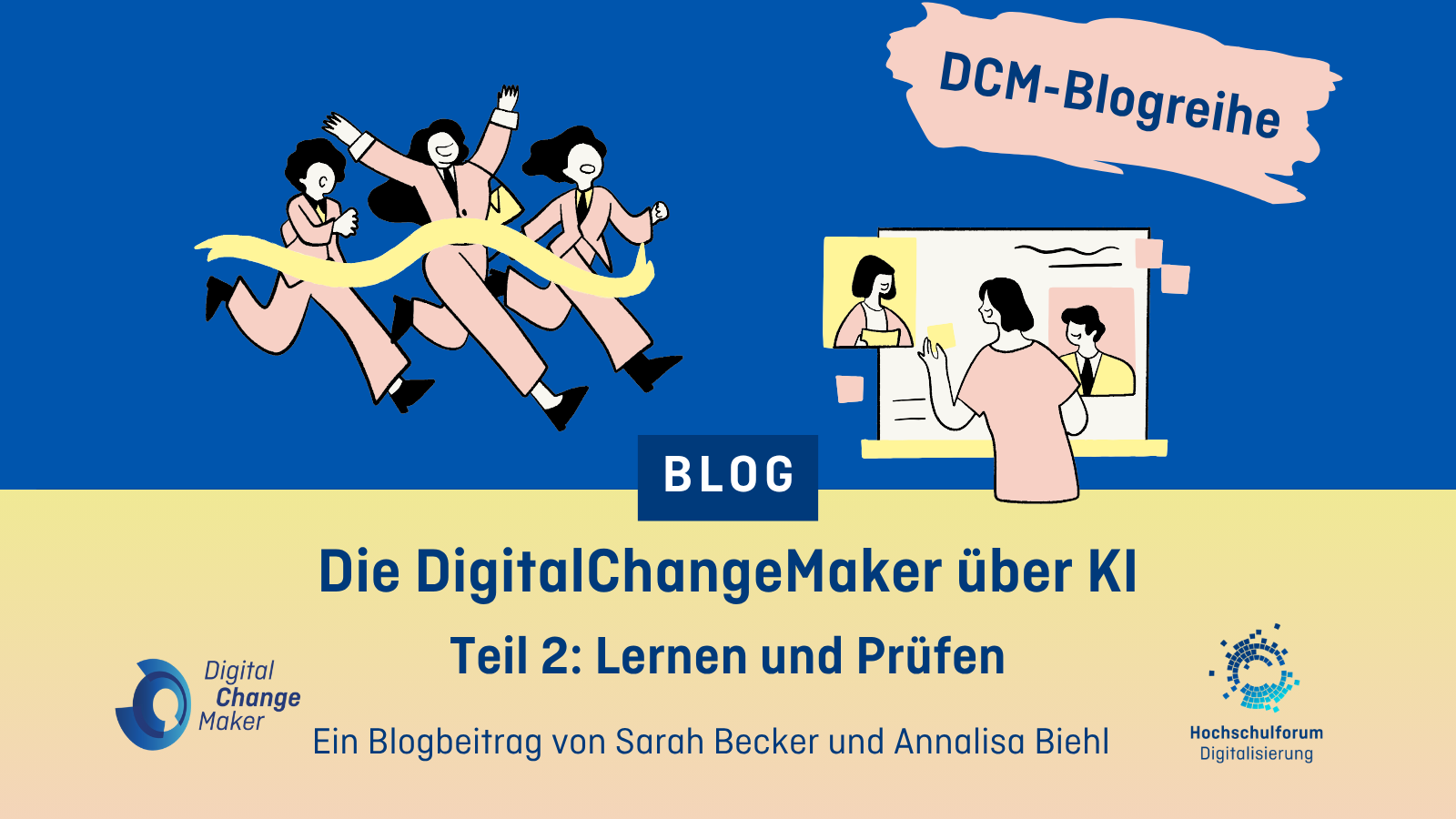Change Management: Good Teaching, Digitization and Modernization with Studynet 3.0. A Practice Report from the University of St.Gallen
Change Management: Good Teaching, Digitization and Modernization with Studynet 3.0. A Practice Report from the University of St.Gallen
11.09.19
„Acceptance and use of the technical possibilities are the yardstick for the success of the digitization process.“ In the guest article Jacqueline Gasser-Beck, head of the „Teaching Innovation Lab“ at the University of St.Gallen, writes a practical report about the application of the new Learning Management System „Studynet 3.0„.
This article was automatically translated using DeepL Translator. Please excuse any errors.![Technical possibilities are the yardstick for the success of the digitization process. Photo: [https://unsplash.com/photos/2FPjlAyMQTA John Schnobrich] Technology Success Digitization](/sites/default/files/images/blog/john-schnobrich-2FPjlAyMQTA-unsplash.jpg)
Introduction
Teaching plays a central role in the self-image of the University of St.Gallen (HSG) – so we have laid down in our mission statement that as a „leading business university […] we want to set global standards in research and teaching„. In order to meet this demand on ourselves, we must accept and help shape change in a constantly changing world – also and especially with regard to the digitization of the university. But as Felix Stalder also writes in his contribution to the challenges of digitality, this is not primarily about hardware or software. If we want to set global standards for good teaching, other questions are at the centre. Why digital teaching at all? What are the challenges in the digitalization of universities? How can we achieve maximum approval for the use of digital tools? After all, the acceptance and use of technical possibilities are the yardstick for the success of the digitisation process.
Change process in three phases
The digitisation of the university is not an end in itself, but offers the opportunity to question (once again) established structures. Therefore the digitisation of teaching means „change“ in the best sense: a change with an effect on all areas of the university with the aim of continuous quality improvement. We distinguish between three phases: Change begins with vision and goal setting. In the second phase, the focus is on implementation – ensuring acceptance by all affected groups plays the most important role here. In the third phase, there is the digitized university, which can react flexibly to changing requirements.
At the beginning are vision and goal setting
The university-wide vision of teaching at the HSG was the starting point for the change process in 2015. In the opinion of all participants, holistic teaching that sets global standards and can be continuously improved through innovation was only possible with the help of technology-supported teaching development. However, the existing Learning Management System (LMS) „StudyNet 2“ had reached its limits: the manifold teaching and examination formats of the HSG as well as mobile devices were hardly supported. Also, the content input was quite time-consuming. That’s why digital-savvy lecturers and students increasingly used the services of other external providers such as Google Apps, Slack or Trello – but such external services could not be integrated into the existing system.
Learning environment and technology selection requirements
In order to ensure the realisation of the desired result – an LMS that is not only used as a document repository but also supports high-quality and innovative teaching – a two-year evaluation phase was carried out at the HSG. A pilot study was conducted to determine the needs of the various stakeholders:
-
Students attach particular importance to a modern and user-friendly platform that supports the individual learning process.
Lecturers need support for innovative teaching formats and easy integration of external content and services.
Simple maintenance, security and stability are central to IT.
From the administration’s point of view, compliance and the possibility of quality-based evaluation of course offerings (keyword: Assurances of Learning) play an important role.
The technical requirements were then set out in a requirement specification for the new LMS „StudyNet 3.0“: Support of innovative teaching and examination formats (such as Flipped Classroom, Blended Learning, Peer Assessment), the integration of standard software such as Office 365 and mobile devices as well as the integration of tools for the analysis of teaching and learning success. At the end of this first phase, after a detailed market analysis, the decision was made to use Instructure’s Canvas learning platform.
Phase 2 – Participation and support ensure user acceptance
The HSG’s requirements for user acceptance are high: an adoption rate of 90% is targeted within 2 years. The first pillar for achieving this user acceptance in the implementation phase – phase 2 of the change process – is the participation of the pilot group in the decision for the LMS: In a joint process, all user groups were able to participate and test the technology. The second pillar for user acceptance is the comprehensive support services for lecturers:
For the rollout of the new system, the Hochschuldidaktische Zentrum (HDZ) and Instructure offered numerous training courses in various formats.
The HDZ’s wide range of training courses continuously shows lecturers what high-quality teaching can look like with the inclusion of new digital tools. Differences in the digital literacy of the lecturers are taken into account.
A designated „Teaching Day“ with best practice examples ensures the transfer of know-how within the institution. By involving external experts, HSG lecturers also benefit from the experience of other universities.
As part of a „train-the-trainer“ program, students are continuously developed into tutors who then support lecturers in the implementation of digital teaching formats. In this way, the student body empowers the lecturers and the active role of the students is strengthened.
An up-to-date and transparent communication strategy forms the third pillar for achieving user acceptance: A dedicated website provides information on the project status at all times and makes the training materials available in writing as well as in videos. Mass mailings ensure that up-to-date information reaches external lecturers and informs them about the next steps. Information events for specific organizational units, the various HSG schools and students supplement the electronic information offerings.![Technical affinity poses a particular challenge. Photo: [https://unsplash.com/photos/9Q_pLLP_jmA Rob Lambert] Technical affinity.](/sites/default/files/images/blog/rob-lambert-9Q_pLLP_jmA-unsplash.jpg)
Phase 3: Challenges and opportunities of the digitized university
As in other change processes, many of the challenges facing the digitised university are particularly evident in its operations: it was unexpectedly difficult to reach external lecturers and students enrolled in a wide variety of formats with the relevant messages. Here, the development of communities has proven to be an opportunity to convince students and lecturers of the new technology. Secondly, differences in digital literacy and technical affinity pose a challenge, especially for lecturers: Training and system configuration must take into account the different needs and preferences. Heterogeneity forces – and this is both a challenge and an advantage – a focus on the needs of the users and not on internal processes and structures. And thirdly, the switch to canvas was perceived by many lecturers as a quantum leap that made established formats obsolete. In many cases, a complete rethink was necessary in order to make sensible use of the technology’s possibilities. The corresponding cultural change can only succeed if educational and digital change support and interpenetrate each other.
Compulsory course in controlling as an example of success
A positive example of the synergy between these two areas is the compulsory course in controlling with a target group of more than 800 participants. A carefully planned learning path consisting of online and offline elements allows interactive instruction, teamwork of the students, individual learning control and comprehensive and fast feedback to the students: The first step is a short introductory video, reading materials and digital exercises that can be used without media breaks within the learning platform. The classroom lectures and exercises deepen and repeat the learning content, and students can then receive timely feedback in chats and forums. Students work on a case study in an interactive group task and present their results in a freely selectable video format – from PowerPoint presentations with voiceover to short films – everything is possible. Feedback is provided via peer review, and the supplementary final exam is also held online in multiple choice format. In this way, the digital tools comprehensively support the use of involving teaching techniques and the development of central competencies among students.![Holistic teaching is only possible with the help of technology-supported teaching development. Photo: [https://unsplash.com/photos/THdmJFIBEI8 Angel Sinigersky] Holistic teaching.](/sites/default/files/images/blog/angel-sinigersky-THdmJFIBEI8-unsplash.jpg)
Conclusion: StudyNet 3.0 supports continuous improvement of the learning experience
The conclusion on digitisation at the HSG is positive. The potential of digitization can be used to achieve the HSG’s vision and goals. The increasing use of blended learning formats improves the quality of teaching and supports the acquisition of key skills. Through mobile and omnipresent learning, students increasingly assume responsibility for their learning process. And through the use of teaching and learning analytics, existing teaching programs can be continuously developed and their quality assured and improved.


 Mauritz Danielsson
Mauritz Danielsson 
 Peter van der Hijden
Peter van der Hijden 
 Annalisa Biehl
Annalisa Biehl 